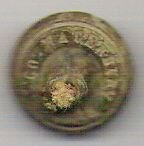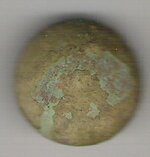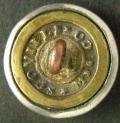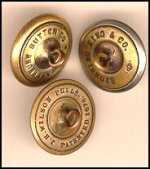funkman
Bronze Member
I was able to detect the otherside of the street today and besides finding 5 pennies and a nickel (all clad) I came across this button that has on the back "Waterbury Button Co." Just searching a little the company was making buttons since the Revolutionary War, except I think they were called a different name. The back did not come out the best in the photo, not saying the front did either though. Can someone help me identify what kind of button this is? I do not want to wash it or rinse it with water uinless you guys think it will be okay. Could I see if there was a design on it? looks like it has a nice patina going so however that makes it able to be aged or not.
Thanks guys........okay Diving Doc....time to earn another cookie!!!
Funkman
Thanks guys........okay Diving Doc....time to earn another cookie!!!
Funkman










